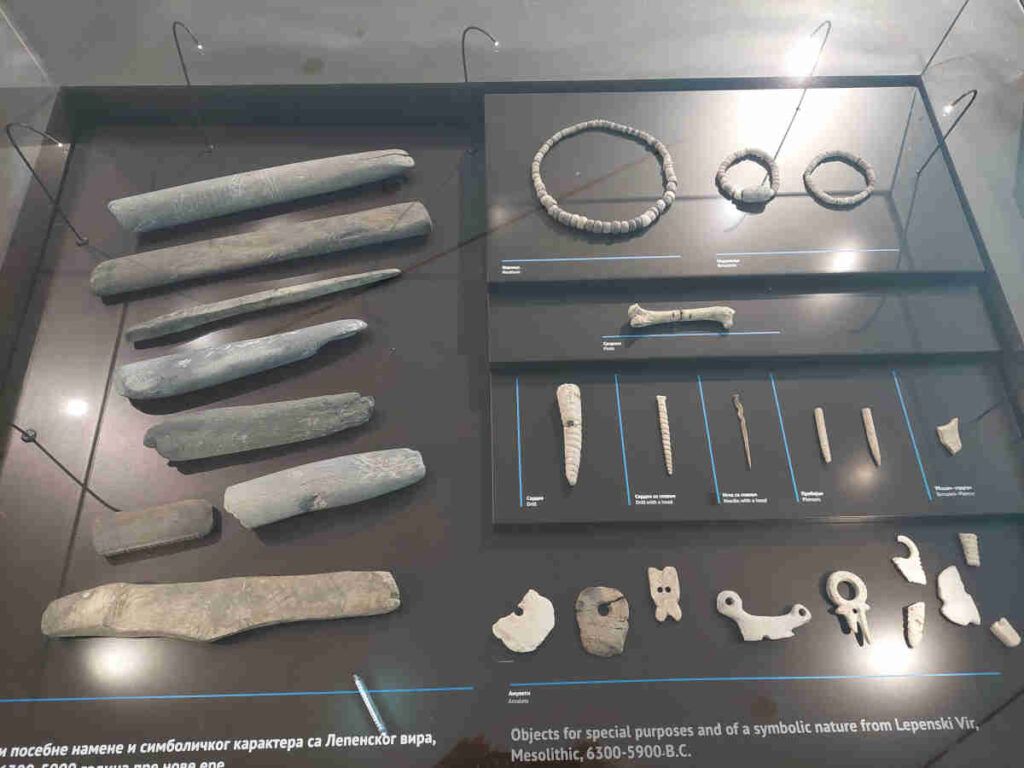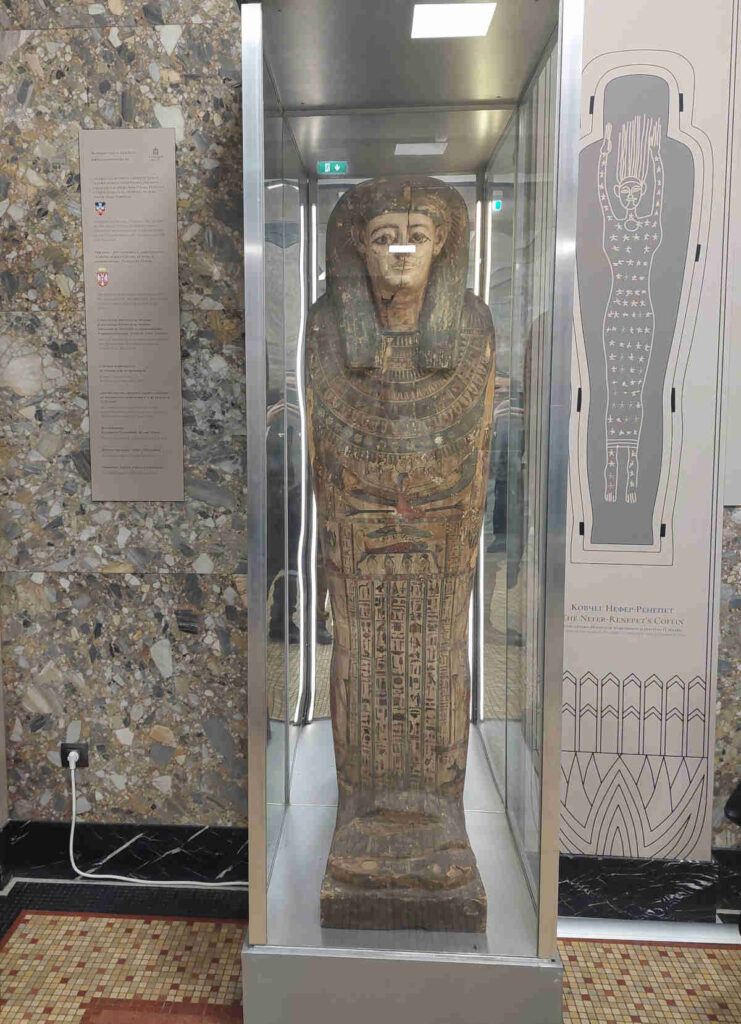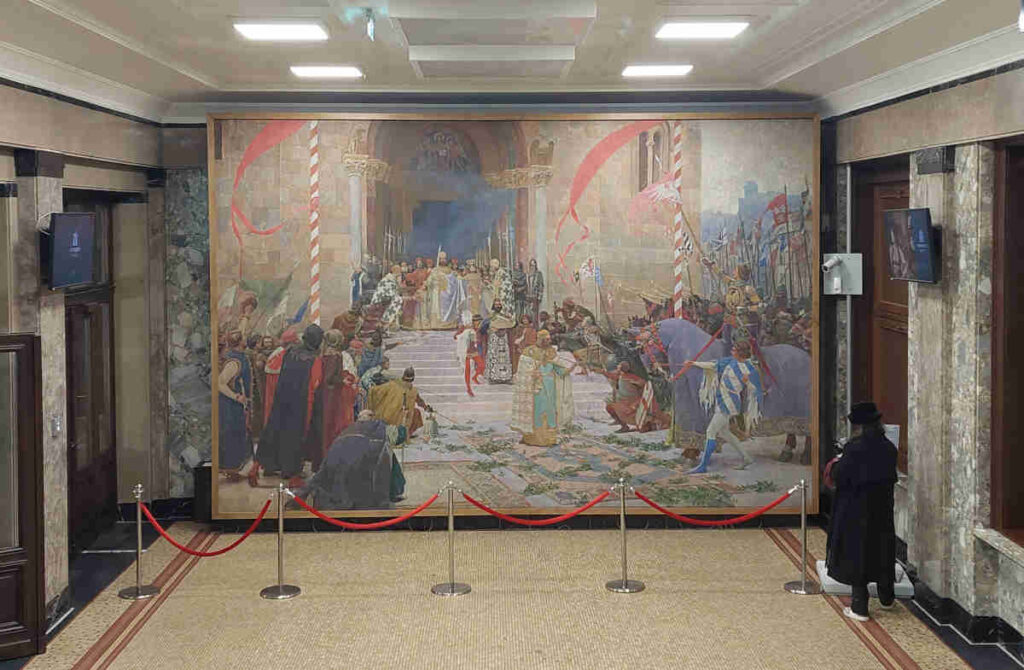The National Museum of Serbia, located in the heart of Belgrade, showcases the rich tapestry of regional and European history, art, and heritage. Established in 1844, the museum’s diverse collections span prehistoric artifacts, medieval masterpieces, and modern artworks. Having recently explored the museum’s permanent exhibition, I’m excited to provide you with my brief highlights, encouraging you to experience the museum firsthand.

The Permanent Exhibition
The museum’s permanent exhibition is a treasure trove, spanning from the Paleolithic period to 20th-century art. Organized across three levels and occupying an expansive 5000 sqm of exhibition space, the collection offers a comprehensive exploration of Serbian, and European, cultural evolution.

Prehistoric Period
The museum displays some of the earliest artifacts ever found in the region, for example tools made of stone used by people in what is now Serbia during the Paleolithic period, dating back from 300,000 to 70,000 years ago.
One of the most significant discoveries is the jawbone of a hominid, a unique finding on a global scale which continues to be the subject of numerous research studies. It is estimated to be between 397,000 and 525,000 years old.

The Lepenski Vir collection showcases artifacts from a prehistoric settlement on the banks of the Danube River. It’s truly fascinating to observe everyday objects like needles, hooks, and spatulas, along with jewelry and sculptures created by people between the 10th and 6th millennia BC For those eager to delve deeper into this topic, there’s an exceptional museum located near the original Lepenski Vir site in eastern Serbia, offering a comprehensive exploration of the area’s rich prehistory.

My favorite item in the prehistoric section is the Red-Haired Goddess, an early Neolithic monumental figurine crafted from baked clay. Discovered in 1989, it was recently included in the National Museum in Belgrade. The artifact fascinates with its feminine characteristics, including a slender waist, overly accentuated hips, and long, straight red-dyed hair. She’s like a Kim Kardashian from eight thousand year ago, proving that exaggerated feminine features have a timeless allure.

The Bronze Age collection features items dating from 2500 to 1000 BC, including stunning gold jewelry sets found in Velika Vrbica near Kladovo in eastern Serbia.
Ancient Egyptian Coffin and Mummy

The museum displays the coffin of Nefer-renepet, dating back to mid-4th century BC, specifically from the 30th dynasty. This remarkable artifact was generously donated to the National Museum by a collector who acquired it at a Sotheby auction in London in 1921. Nefer-renepet, identified as a dancer at the temple of god Min in Akhmim, was discovered at the temple’s necropolis.

Additionally, the museum showcases an Egyptian mummy named Nesmin, a priest from Akhmim. Hadži Pavle Riđički Skribešćanski, a Serbian nobleman, purchased the mummy in its original coffin during his visit to Luxor in 1888. Driven by patriotic intentions, he generously donated it to the people of Serbia, contributing to the cultural heritage housed within the museum.
Serbian Painting Masterpiece: Coronation of Emperor Dušan

The painting Coronation of Emperor Dušan is a historical masterpiece commissioned by the Kingdom of Serbia for its participation in the World Exhibition in Paris in 1900. This monumental composition, spanning over 20 square meters, depicts the coronation ceremony of Emperor Dušan in Skopje in 1346. The artwork not only captures the grandeur of the event but also showcases the artist’s skill in fulfilling a royal commission with meticulous attention to detail. With its rich historical narrative and impressive size, the painting stands as a testament to Serbian artistic heritage and the country’s representation on the global stage at the turn of the 20th century.
The History of Serbian Money

In two small rooms, safeguarded by exceptionally thick doors, the museum showcases a delightful collection of Serbian currency. The exhibit spans from the rare first silver and copper coins issued during the 1230s by King Stefan Radoslav of the Nemanjić dynasty to the banknotes circulated in the period between 1868 and 1918, the currency of the Kingdom of Serbs, Croats, and Slovenians from 1918 to 1944, post-World War II money during the Democratic Federal Yugoslavia (1944-1992), and culminating with the (in)famous banknotes from the hyperinflation era of 1992-1994, including the 50 billion dinars one (50,000,000,000) which was worth just 12.5 German marks at the moment of release.
Modern European and Serbian Art

In the final section, the museum presents a diverse array of paintings, sculptures, and drawings from the more recent centuries and decades. Alongside a vibrant collection of Serbian and Yugoslav art, the institution safeguards an impressive selection of 1,100 works by European artists, including Van Gogh, Pierre-Auguste Renoir, Claude Monet, Camille Pissarro, Peter Paul Rubens, Edgar Degas, and many many more. This assortment spans the period from the 14th to the 20th century, offering visitors a comprehensive journey through the evolving styles and artistic expressions of European creators across the centuries.

This is by no means a comprehensive overview. I’ve just given you a glimpse into the extensive archaeological, ethnographic, and artistic treasures. I strongly encourage you to plan a visit. Entrance is free on Sundays, while on Mondays the doors are closed, so plan accordingly and immerse yourself in the rich cultural offerings awaiting you at the National Museum of Serbia.
Have I managed to inspire you to visit the National Museum in Belgrade? Tell me in the comments below.


Leave a Reply